Connectivity and Digitisation Whitepaper
In the modern scientific environment, there is a constant desire to improve the speed and efficiency of processes in the development of new drugs, testing protocols and technologies. Companies operating in this field are continually reshaping workflows and even work environments to leverage incremental improvements in technology to achieve greater throughput is shorter time. One piece of that continuous optimization process is through connectivity and digitization. In this white paper, we will explore how the connectivity and digitization needs vary depending on the workflow within the life science laboratory and how Biotage approaches fulfilling these needs.
Connectivity and Digitization
Connectivity and digitization in life science refers to the use of technology to connect laboratory instruments, automate laboratory workflows, and capture and manage data electronically. Connectivity involves linking laboratory instruments to one another, to laboratory management software, and to other devices external to the laboratory. This allows for the exchange of data, the ability to remotely control and monitor instruments, and the integration of instruments into laboratory management platforms. Examples of connectivity in life science include using Wi-Fi or Bluetooth to connect instruments to laboratory management software, connecting multiple instruments to one another to automate workflows, and integrating laboratory data with cloud-based storage or analytics platforms.
Digitization involves the transformation of laboratory data from analogue to digital formats. This includes the use of electronic laboratory notebooks (ELNs) to replace paper notebooks, the capture of data electronically using laboratory instruments, and the storage of data in electronic formats. Digitization allows for
faster and more accurate data management, as well as greater accessibility and the ability to share data across multiple platforms.
Together, connectivity and digitization in life science help to improve laboratory efficiency, reduce errors, and enhance data management and sharing. They enable scientists to collect and analyze data in real-time, monitor experiments remotely, and integrate data across multiple laboratory instruments and platforms. As a result, connectivity and digitization have become essential components of modern life science research and laboratory operations.

